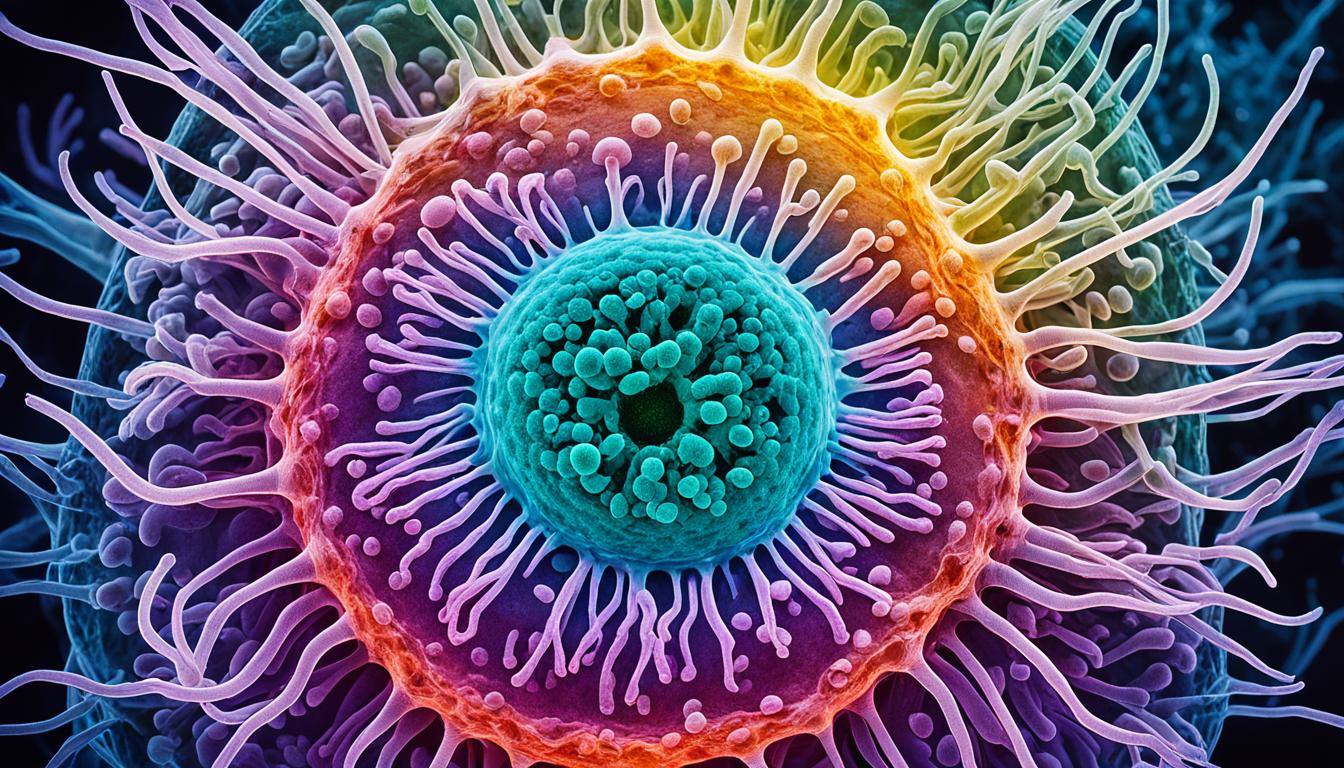Chlamydia trachomatis is a widespread disease spread through sex. It’s caused by a bacterium. This disease can spread during vaginal, anal, and sometimes oral sex. It can also pass from an infected mother to her baby at birth. The problem is often called a “silent disease” because many people don’t show symptoms. Yet, if not treated, it can cause serious health issues. Men might feel pain in their testicles or see fluid coming out of their penis. They may also feel a burning pain when they urinate. For women, they might have stomach pain, a strange vaginal discharge, or bleeding between their periods.
Key Takeaways:
- Chlamydia trachomatis is a common sexually transmitted disease caused by the bacterium Chlamydia trachomatis.
- It can be transmitted through unprotected vaginal, anal, and sometimes oral sex, as well as from mother to baby during childbirth.
- The infection is often asymptomatic, but can lead to serious complications if left untreated.
- Common symptoms in men include pain and swelling of the testicles, unusual penile discharge, and a burning sensation while urinating.
- In women, symptoms may include abdominal pain, unusual vaginal discharge, inflammation in the cervix, and abnormal bleeding between periods.
Chlamydia is a common STD that affects both genders. Knowing about its symptoms, how it spreads, and diagnosis is essential. In the upcoming sections, we’ll look closer at how Chlamydia spreads. We’ll also explore its symptoms and how doctors diagnose it. Plus, we’ll talk about the possibility of using stem cell therapy to treat it.
Transmission and Risk Factors of Chlamydia Infection
Chlamydia infection comes from the bacterium Chlamydia trachomatis. It spreads through sexual contact with an infected person. Unprotected vaginal, anal, and oral sex can pass the infection. Also, touching infected genitals can spread the disease.
Many things can increase your chance to get Chlamydia. For example, having sex without protection with many partners raises the risk. Being young (under 25 years of age), a woman, or a man who has sex with men also makes you more likely to get it.
Although Chlamydia is common, there are ways to protect yourself. Using condoms during sex is a good start. Also, getting regular sexual health check-ups and talking openly with your partners can lower your risk.
Symptoms and Diagnosis of Chlamydia Infection
Chlamydia is often has no symptoms, specially at first. But when signs show up, they differ in men and women.
Men might notice pain and swelling of the testicles, unusual penile discharge, and a burning sensation while urinating. Women, though, might feel abdominal pain, see unusual vaginal discharge, find inflammation in the cervix, and have abnormal bleeding between periods.
Finding out if you have Chlamydia is mainly through a urine test or a swab from the genital area. It’s key to get tested regularly, especially if you’re active sexually or have many partners. Catching it early and getting treated quick help stop others from getting it and lower your chance of problems.
Stem Cell Therapy for Chlamydia Infection
Chlamydia trachomatis is a sexually transmitted infection. Today, it doesn’t have a cure. But, antibiotics can work well to get rid of the bacteria in your body. It’s very important to take your prescribed antibiotics fully to treat this infection successfully.
Recently, scientists have become really interested in using stem cell therapy to fight Chlamydia. Even though it’s still being tested, it’s showing a lot of potential. This method could help your body grow new tissue and calm down the swelling that the infection causes. Stem cells can change into many different kinds of cells, which is great for fixing and regrowing hurt tissues.
More study is needed to say for sure that stem cell treatment works fully and is safe for Chlamydia. But, the early signs are looking good. Using stem cell therapy could boost the way your body heals itself. This could be a big step forward in treating this sexually transmitted infection.

